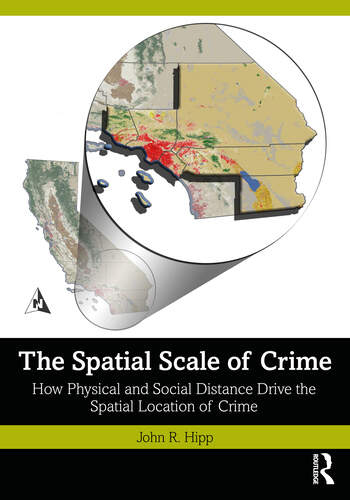
That’s what John Hipp’s new book seeks to answer
Consider the new book by John R. Hipp an overview of the research he has conducted since arriving at UC Irvine in 2006 as well as a clarion call for further study by the professor of criminology, law and society, urban planning and public policy, and sociology.
 Rather than focusing on who commits crime, The Spatial Scale of Crime: How Physical and Social Distance Drive the Spatial Location of Crime (2023, Routledge) examines when and where crime is more likely to occur.
Rather than focusing on who commits crime, The Spatial Scale of Crime: How Physical and Social Distance Drive the Spatial Location of Crime (2023, Routledge) examines when and where crime is more likely to occur.
“One insight alone that greatly helps in explaining where crime occurs is that the spatial patterns of where people go in their daily lives are strongly driven by a tendency to travel shorter rather than longer distances, yielding what researchers term a distance decay function,” Hipp explains. “This insight also drives what we perceive to be our neighborhood, as well as the social relationships we maintain in our neighborhood.”
This is important to understand, the professor says, given the times we live in.
“With the increasing availability of crime incident data from many different cities over the last many years, there is a growing body of research on where crime occurs at the micro level of street segments,” Hipp says. “Nonetheless, an unintended consequence is a narrowing of research questions that criminologists pursue, and potentially less understanding of where crime occurs. Given the various forms of social upheaval in recent years, this potentially limits our understanding of crime.”
He is quick to share credit for the body of research that The Spatial Scale of Crime is based upon with his academic colleagues and graduate students.
“One interesting finding is that the explanations of where crime occurs can differ depending on the spatial scale: what explains which street segments have more crime may not explain which neighborhoods have more crime, nor which cities have more crime,” Hipp says. “This idea is not well recognized in the literature. That said, I show some evidence that a theory of mine shows promising results for explaining crime across different spatial scales—but much more research is needed for that question.”
His new book’s main target audience is people in the fields of sociology and criminology — both faculty and students — but Hipp adds that anyone interested in the general question of where crime occurs should check out The Spatial Scale of Crime.
“I hope readers come away with a sense of the great number of insights criminologists have provided in recent years,” he says, “but also the needed directions for research to gain deeper understanding.”
— Story by Matt Coker / John Hipp photo by Karen Tapia